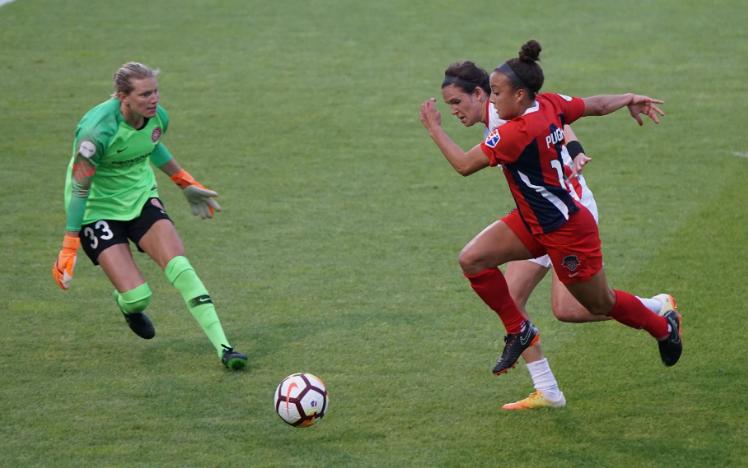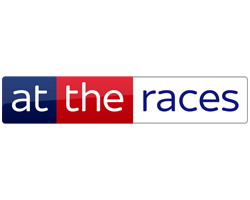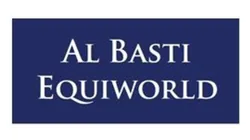We’re into Summer 2019, and once again our TV’s are graced with thrilling World Cup matches to watch.
Only this time it’s the women showing off some seriously impressive skills rather than the men. It shouldn’t be all that unusual right? But unfortunately, some sports that are typically male-dominated are still trailing behind in showcasing female talent.
It’s reported that 1.5 million more men play sport than women each week. That number is staggering, and one that could arguably be influenced by some of the watched sports in the UK - such as football and horse racing - not featuring female athletes and competitions as much as their male counterparts.
Women In Sport Are Still Underestimated
Despite big leaps forward and a hard push on equality over the last few years, women in sport still seem to be underestimated.
Within our own industry of horse racing, it is shown that though there is a large proportion of females in stable staff roles, there is still very few who move to be a jockey. And is it any wonder why with the battle they will face to have a successful career?
An article released just this week includes research by Vanessa Cashmore, which shows female jockeys are still underestimated by the betting public despite being statistically proven to perform well. For example, at this year’s Cheltenham Festival 14.3% of the winners were ridden by women, even though only 9.2% of total rides were taken by female jockeys.
And this unfounded prejudice is seen towards women in lots of sports, with one study from insure4sport reporting controversial responses such as:
- “It’s bad enough having women commentators never mind players”
- “Poor quality, not as skilled, it’s like watching kids play”
- “Because in my opinion, some sports are only meant for men, like football, rugby etc, women try to muscle in too much into sports which were primarily meant for men.”
- “I think women lack enthusiasm.”
- “Women look daft playing football.”
This perception filters into the athlete's livelihoods as well, with drastic differences in pay compared to their male counterparts. Back in 2015, the US women's football team filed a wage discrimination lawsuit after it was shown they were paid just a quarter of what the men's team earnt. This is despite the women winning the tournament and generating $20 million more than the men that year. Their lawsuit still continues to fight for equality.
This article hints at how perception is a self-fulfilling problem, with media not willing to invest in advertising campaigns, coverage or any acknowledgement of these tournaments as they don’t believe they will gain as much as from the male competitions. But by not covering them, they are adding to the problem that these competitions are not at a standard that they deserve to be covered.
What Is Changing?
All this being said, 2019 is a year of change. Even with being underestimated, underpaid, and underutilized, women still shine through and attract crowds which are only getting bigger.
A survey shows that there has been a 64% increase in people watching the Women’s World Cup worldwide this year compared to 2015, with this number going up to 81% for just us who will be watching in Britain.
There have been some really cool marketing campaigns come out this year's tournament too that are well publicised, such as Germany’s "We don't have balls, but we know how to use them." campaign.
Media support for these competitions and tournaments can make or break athletes careers, as well as inspiring a generation of young girls who think they can work in the stables but not race the horses, or that football is for the boys to play.
The more support they get, the more opportunities the athletes get. Megan Nicholls (twice winner of The Silk Series) acknowledged that the series had given her the chance to ride for and impress, new trainers. An opportunity she wouldn’t have got without the series.
What Are The Silk Series And The Women’s World Cup Doing?
Both The Silk Series and the Women’s World Cup provide a prominent stage for female athletes to show what they’ve got in front of a captive audience, and for as much accolade as other competitions.
The Silk Series has run since 2017 and is a £150,000 race series for female jockeys that takes place across 15 racecourses in the UK. With Ascot and Chester races joining ARC racecourses for the 2019 series. Races take place on ladies days, making it a truly celebratory occasion for these jockeys. The winner is crowned at ladies day at the St Leger Festival in front of 15,000 racegoers.
Having these competitions front and centre mean that female presence within these sports becomes more the ‘normal’ rather than ‘the women's version’. It opens more opportunity for current competitors and opens doors for those coming into sport.
We’ll be supporting the lionesses during their semi-final this week, and all the female jockeys competing at Chepstow, Great Yarmouth, York, Newcastle and Windsor over July. We hope you will be too.
Written by Lauren Keeling - Arena Racing Company







































